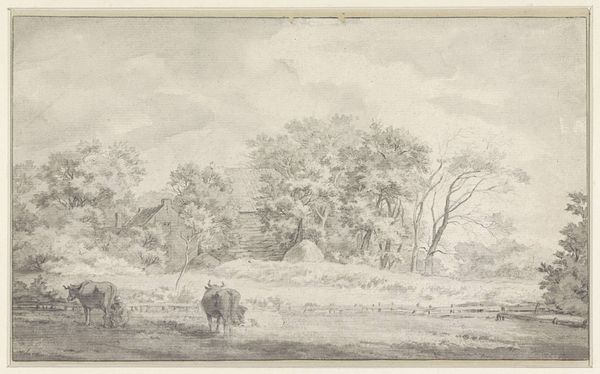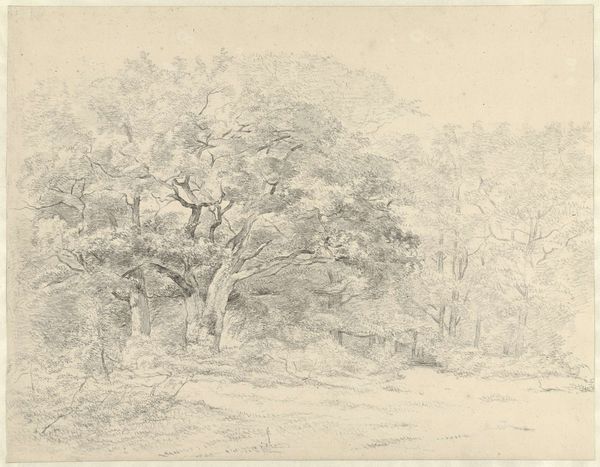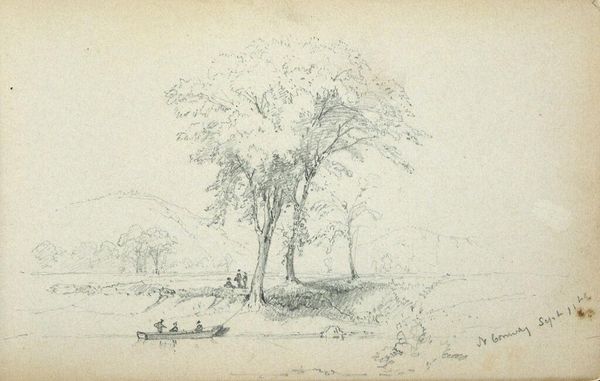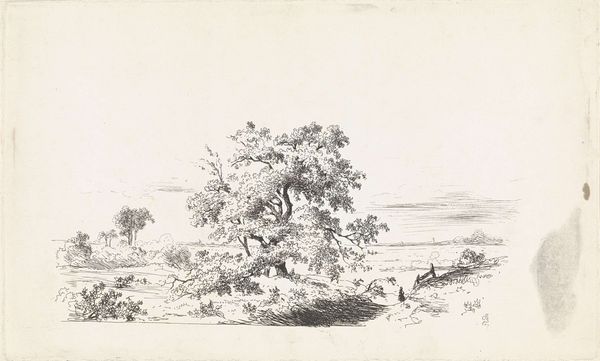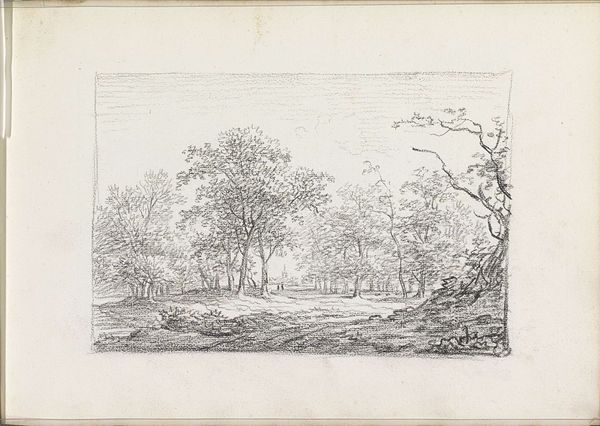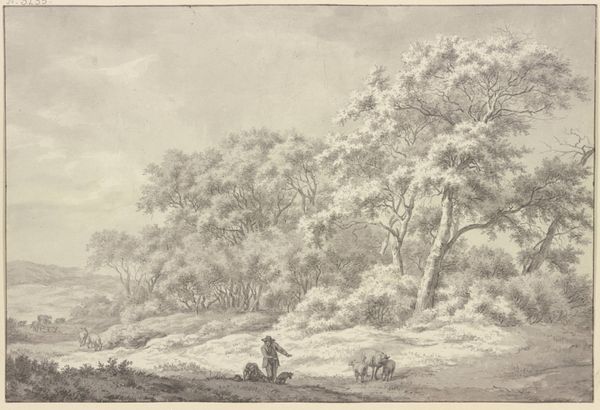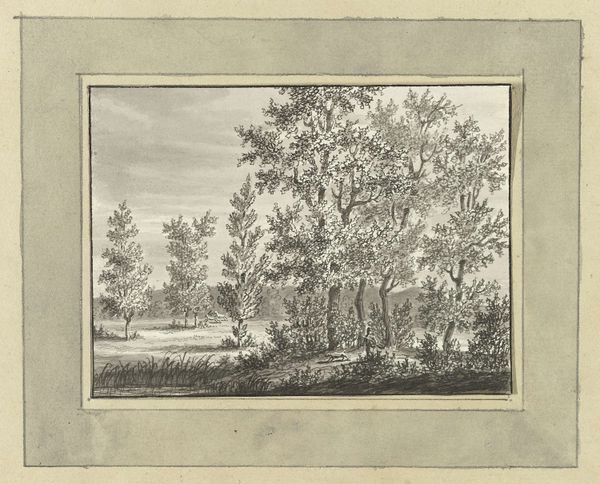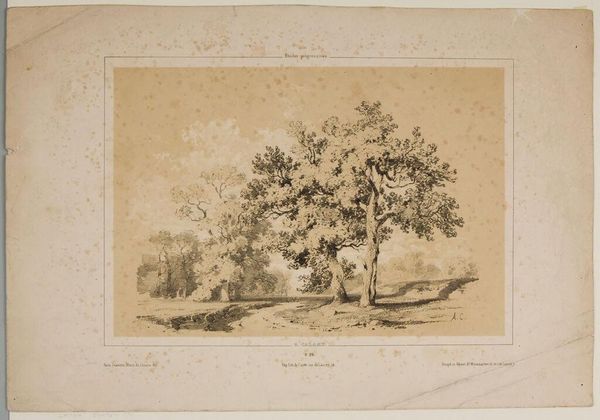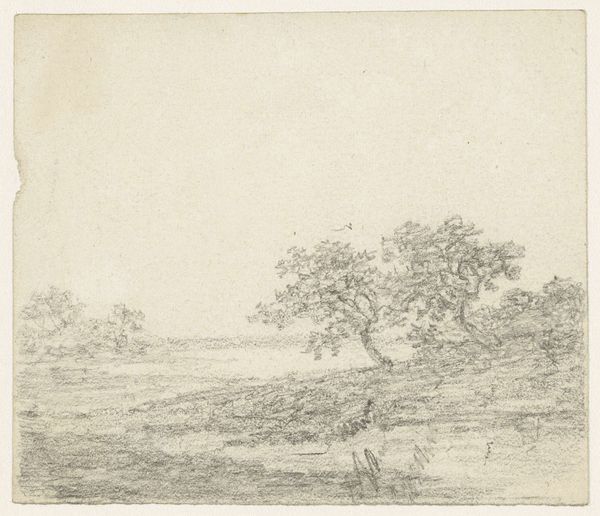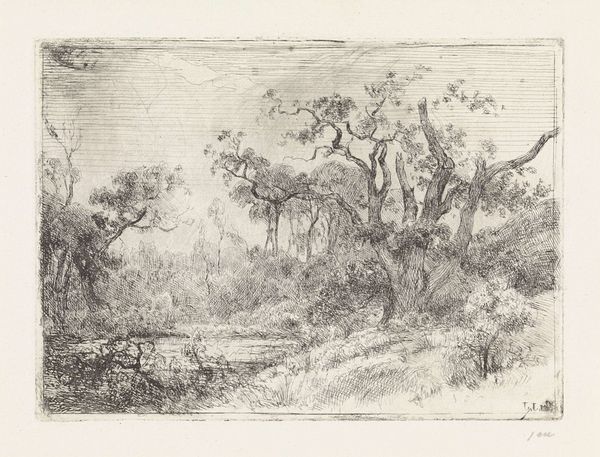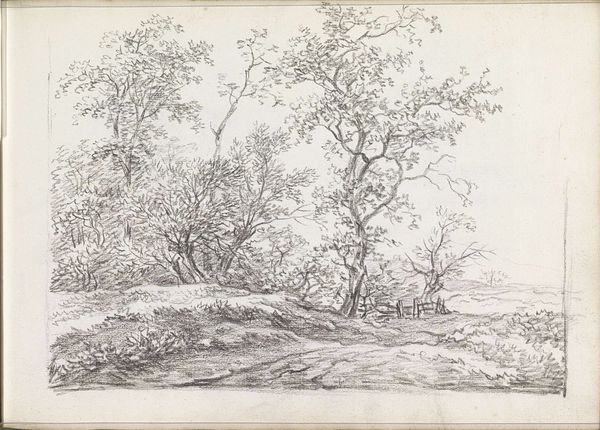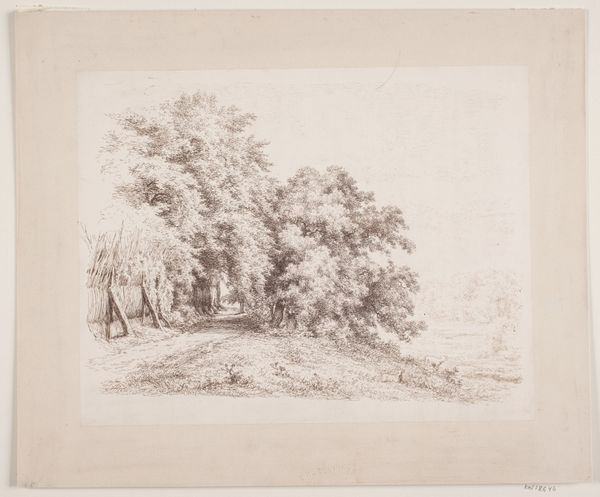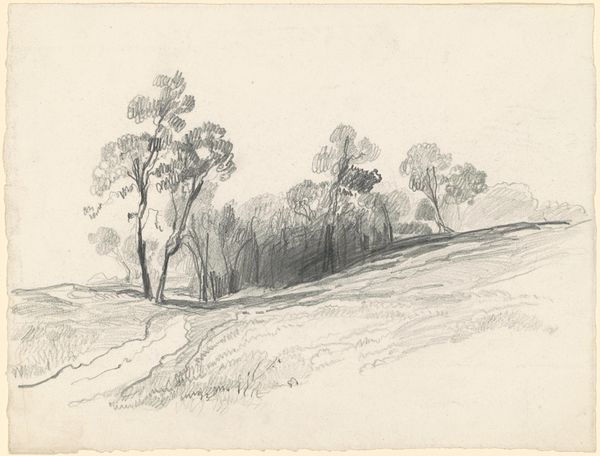
Dimensions: height 142 mm, width 218 mm
Copyright: Rijks Museum: Open Domain
Curator: Welcome. Before us hangs Willem Cornelis Rip's "Landscape with Trees and Herons by a Pond," created around 1874 to 1875. It is executed in pencil. Editor: The pervasive greyscale immediately evokes a subdued, contemplative mood. There's a notable emphasis on capturing light and shadow using what seems like minimal layering. I’m drawn to how the trees are depicted as an isolated cluster of dark strokes on the shore. Curator: The interplay between realism and romanticism is key here. Consider how the drawing captures nature but uses a softened, atmospheric quality. Editor: And what kind of pencil creates these gradations? Looking at the density and variations in shading across the water's surface and the foliage, it seems the artist manipulated either the hardness of the graphite, or perhaps its blend with clay to achieve depth. The relative accessibility of pencil lends a casual, even democratic aspect to what could otherwise be rendered through labor-intensive, class-bound painting. Curator: Interesting. This drawing offers formalist insights. See how Rip employs a clear horizontal division to structure the landscape: the earth in the foreground gives way to a stretch of water which blends imperceptibly with the sky. This generates an effect of depth through perspectival reduction but emphasizes, in the end, the planarity of the sheet itself. Editor: Yes, the materiality seems significant. Notice the subtle imperfections of the paper. It grounds the ethereal quality, a reminder of its physicality and that it has been made and not simply envisioned. We also should consider the labor involved in collecting graphite or refining the clays within pencils available in the period and how these reflect shifts in material economies and drawing practice. Curator: Indeed. In sum, "Landscape with Trees and Herons by a Pond" offers a convergence of form, mood, and medium. Editor: I agree; and further reminds us to consider not just aesthetic intention, but also the overlooked world of materials that constitute our engagements with art.
Comments
No comments
Be the first to comment and join the conversation on the ultimate creative platform.
